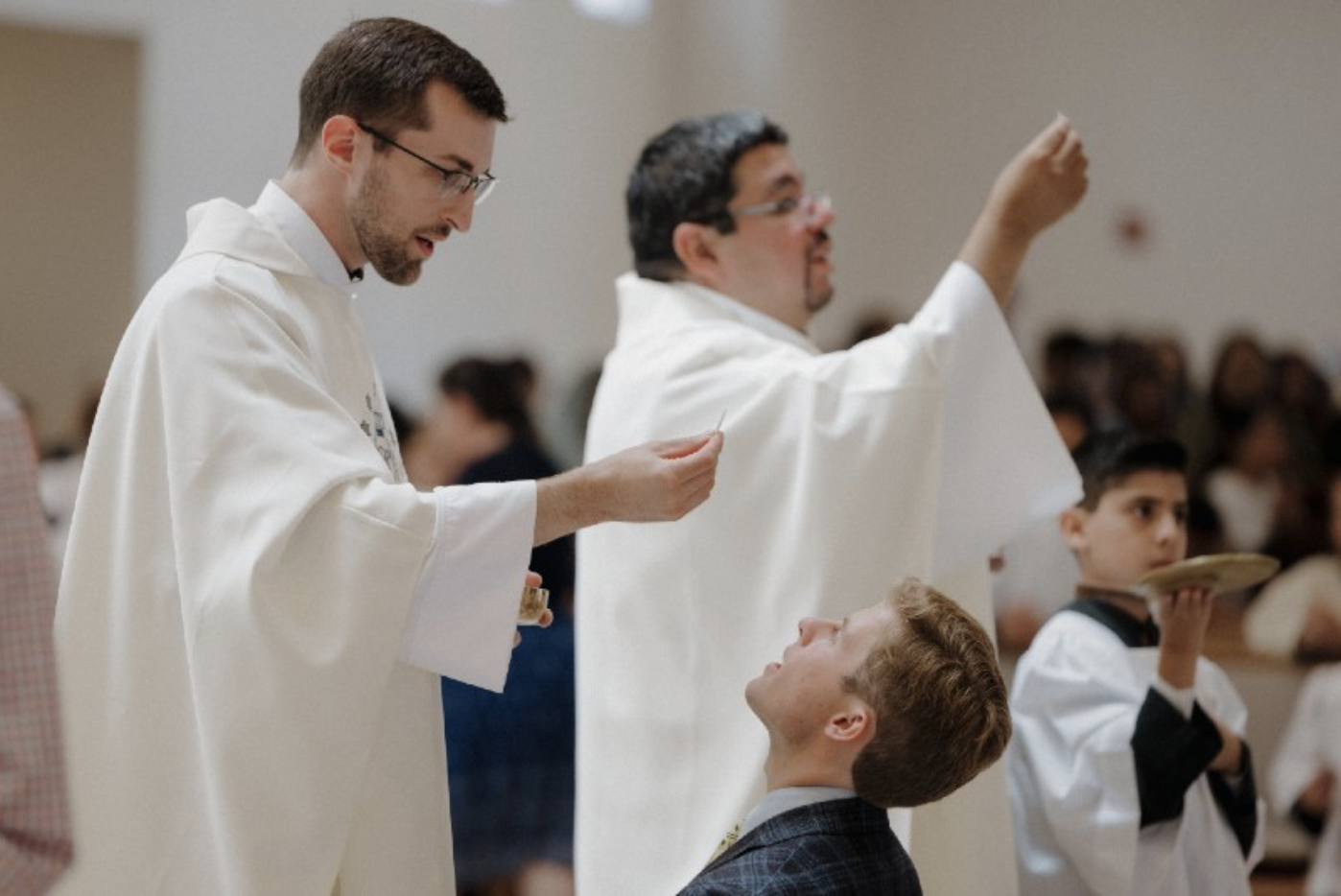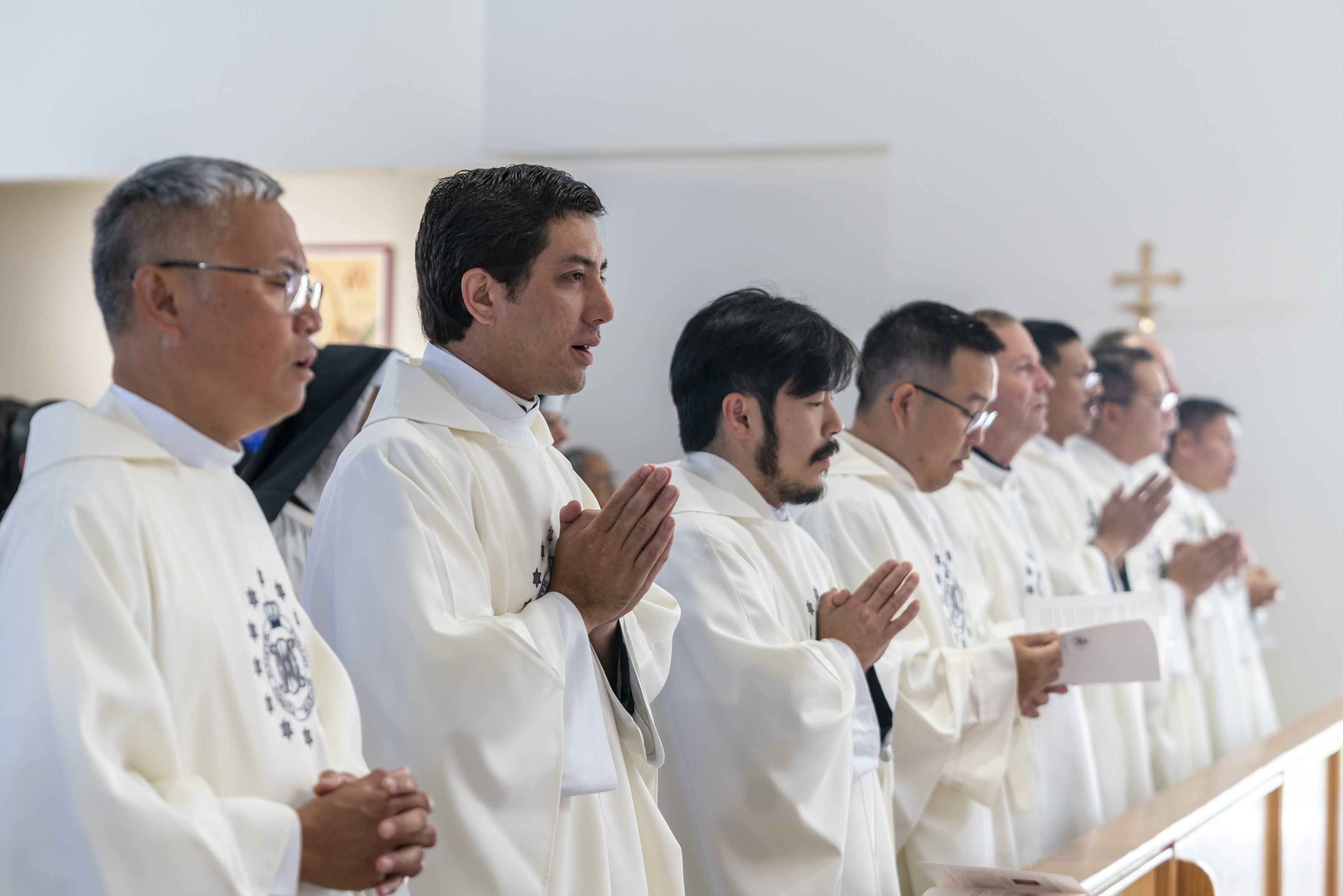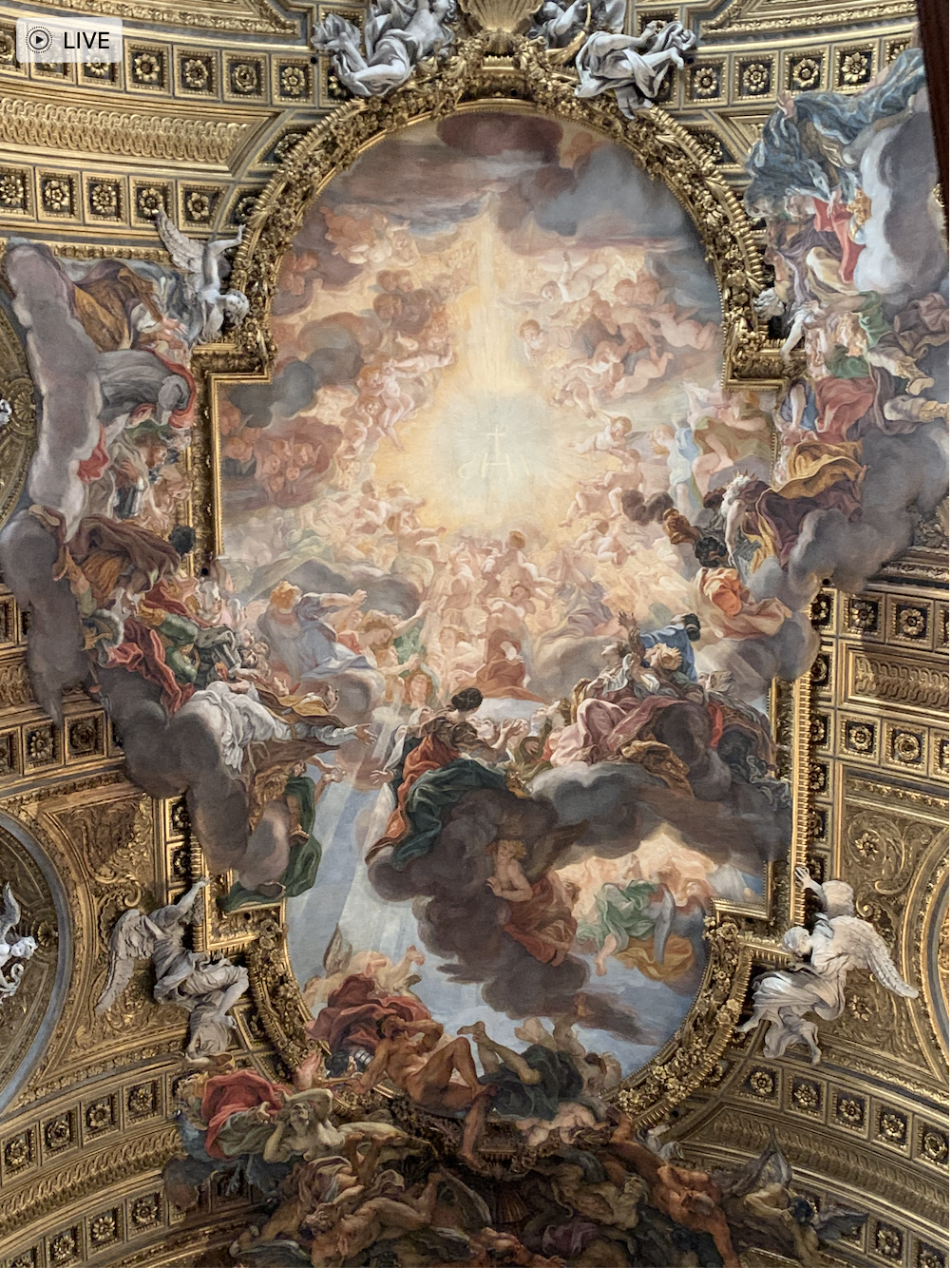
Fr. Ed Broom, OMV
The greatest action that we can do this side of heaven and underneath the sun is to receive Jesus, the Bread of Life, (Jn 6) in Holy Communion. No other action can come close to the reception of our Eucharistic savior. Ignorance of this supremely important gesture can prove catastrophic if not disastrous towards our eternal salvation. In clear, concise and unequivocal words Jesus, in His Bread of Life discourse (Jn 6) states that our salvation depends on nourishing ourselves on Him—the Bread of Life who gives life to the world.
BETHANY: WARM WELCOME FOR JESUS. (Lk. 10: 38-42) Jesus had a family of good friends that were always ready to welcome Him to their home. Not too far from Jerusalem was Bethany, the home of Jesus’ good friends: Mary, Martha and their brother Lazarus. These three truly loved Jesus and cherished Him as a dear friend. Martha worked hard at the details of hospitality and serving Jesus; Mary, more of the contemplative, would entertain Jesus by listening to Him, speaking to Him and simply giving Him a warm welcome by her mere presence to Him.
HOLY COMMUNION AND BETHANY. In a very real sense, we are all called to be a BETHANY for Jesus. Welcoming Jesus into our homes, in imitation of Mary and Martha, can be part and parcel of our spiritual journey towards our heavenly Home. Mary and Martha would invite Jesus to their home, but this did not take place on a daily basis due to the busy apostolic life of Jesus. In this sense we have an advantage over the family of Bethany. Many of us can actually invite and receive Jesus into our homes on a daily basis. How, might you ask? Quite simply by attending Mass and receiving Jesus as our Divine Guest in Holy Communion.
VARIETY OF MANNERS OF RECEPTION. Jesus loves us so much that He has given us free will and respects our free response to His love, but He does not force Himself upon us. Our reception could be of forgetfulness, or apathy and indifference, or coldness or even hostility—all of this happens upon our reception of Holy Communion in the Holy Sacrifice of the Mass. However, it is our earnest desire that all of us, in imitation of Mary, and Martha and Lazarus, make a sincere and concerted effort to receive Jesus with warmth, attention, kindness, and above all with burning love.
THANKSGIVING FOR THE GIFT. Following up on our theme of Jesus as the Divine Guest of our soul, we would like to highlight, and this is of paramount importance, how should we act, what should we do, indeed, what we should say after we have received Jesus into our spiritual homes—the depths of our souls—in Holy Communion. May Mary, Martha and Lazarus and their Bethany experience be both a model and a stimulus for us to upgrade our reception of Our Eucharistic Friend and Lord.
The following points emphasize what are some ways that we can simply speak or things we can say to the Lord after He has come to reside in our homes, our own “interior Bethany”.
1. THANKSGIVING. God loves a grateful heart. The Lord appreciates gratitude and suffers when there is a lack of it—as in the case of the nine lepers who did not come back to thank the Lord for their healing. (Lk. 17:11-19) After receiving Holy Communion, pour out your hearts in gratitude towards the Lord. Cultivar an “attitude of gratitude.” In fact, the more we overflow with gratitude towards the Lord, especially upon receiving Him in Holy Communion, the more abundant and copious He will shower us with signal graces. Thank Him for what? For everything! Actually, all that we have in our lives (with the exception of sin) are pure unmerited and gratuitous gifts from the Father of all good gifts. May the words of the Psalmist echo and resound in our hearts: “Give thanks to the Lord for He is good; His mercy endures forever.”
2. LOVE. Upon receiving the Eucharistic Lord in Holy Communion, indeed the Sacrament of His love, abound in acts of love. Every time you tell the Lord that you love Him, you actually grow more in the intensity of love burning in your heart. Jesus said: “I have come to cast fire to the earth and I am not in peace until that fire be enkindled.”(Lk. 12:49) The fire of the love of the Sacred Heart of Jesus explodes most intensely at the moment of Holy Communion especially when there are hearts longing for the fire of His love.
3. PROBLEMS, FEARS, ANXIETIES, STRUGGLES. Another very important mode of expression after receiving Jesus in Holy Communion is to be dead honest with the Lord Jesus and to express to Him what is going on in your life. Usually in all times, places, and circumstances all of us are suffering in one form or another. We all have some cross—health issue, family problem, economic worry, moral weakness, emotional uncertainty or insecurity, not to mention spiritual struggles. After you receive Jesus into your interior Bethany in Holy Communion this is the propitious time and moment to open up to the Lord and express with utmost sincerity your sufferings. Jesus invites us in these words: “Come to me all of you who are weary and find life burdensome and I will give your rest. Take my yoke upon you and learn from me who am meek and humble of heart because my yoke is easy, and my burden is light.” (Mt 11:28-30). If we could only learn and implement the true meaning of this passage. We are not alone in our struggles our crosses and our sorrows. Jesus, especially after receiving Him in Holy Communion, is there ready to listen to us, comfort us, console us and even to carry us on His shoulder, offer us refuge in His Sacred Heart. Let us allow our fervent Communions to transform our lives.
4. SUFFERING SOULS AWAITING OUR HELP. The souls in Purgatory are saved due to God’s mercy and dying in the state of sanctifying grace. However, there suffering is most intense in the fires of Purgatory. A fervent Holy Communion can serve to not only allay or alleviate these excruciating pains but be the final means to catapult those souls from the fires of Purgatory towards the Heavenly banquet. Of all the prayers, sacrifices and spiritual practices, the offering of Mass and Holy Communions is by far the most efficacious.
5. FAMILY MEMBERS: CONVERSION OF SINNERS. Another intention of capital importance that can be part and parcel of conversing with the Lord Jesus after receiving Holy Communion is to pray for our family members, our loves ones, relatives and friends. However, there is a very important class of persons that should be part of our Communion dialogue: sinners, those who have turned their back on the Lord Jesus, their God, the Church and the Light of Truth itself. Parents who have Prodigal sons or daughters, wandering and lost sheep, angry, bitter confused and disgruntled offspring and siblings, upon receiving the Lord Jesus in Holy Communion beg the Lord for their conversion, return to the Church and eternal salvation.
OUR LADY. Mary is truly the Mother of God, the Mother of the Church, the refuge of sinners as well as the Mother of the Eucharistic Lord. We should also beg Mary for the grace to receive Jesus with great humility, devotion and love in Holy Communion and to praise, adore, thank and implore Him as we receive Him into the Bethany of our hearts. Mary received Jesus with the greatest of love in the Incarnation. Mary will pray for us that we too will receive the Eucharistic Lord with an explosion of love.


